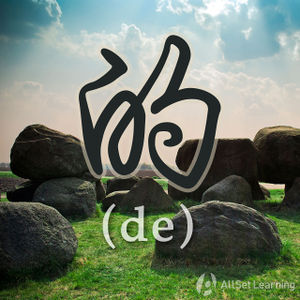Difference between revisions of "Modifying nouns with phrase + "de""
m (Text replace - "Adjectives and Adverbs" to "Adverbs with Adjectives") |
|||
| Line 1: | Line 1: | ||
{{Grammar Box}} | {{Grammar Box}} | ||
| + | |||
== Structure == | == Structure == | ||
| Line 18: | Line 19: | ||
* <em>去 北京</em> <strong>的</strong> 火车。 | * <em>去 北京</em> <strong>的</strong> 火车。 | ||
* <em>今天 来</em> <strong>的</strong> 人。 | * <em>今天 来</em> <strong>的</strong> 人。 | ||
| − | * <em>昨晚 喝 | + | * <em>昨晚 喝 了 很 多 啤酒</em> <strong>的</strong> 那 个 人。 |
</div> | </div> | ||
==See also== | ==See also== | ||
| + | |||
*[[Modifying nouns with adjective + de]] | *[[Modifying nouns with adjective + de]] | ||
*[[Expressing possession]] | *[[Expressing possession]] | ||
Revision as of 09:59, 14 August 2012
-
Level
-
Similar to
-
Used for
-
Keywords
Structure
As well as attaching adjectives to nouns, 的 (de) can be used to attach whole phrases to nouns. In English this is often achieved with "who" or "that", e.g. in "The man who went to Beijing" or "The book that I bought yesterday".
Phrase + 的 + Noun
Here a phrase means Verb + (Object).
Examples
- 去 北京 的 火车。
- 今天 来 的 人。
- 昨晚 喝 了 很 多 啤酒 的 那 个 人。



